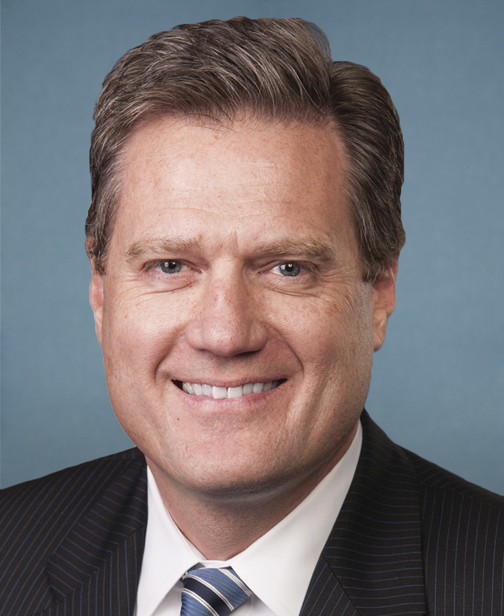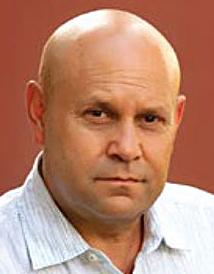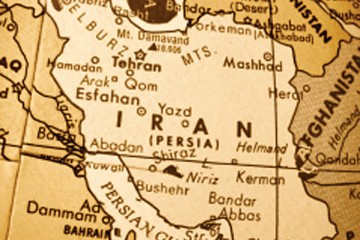Censorship or equalization? Bible removed from Wright-Patt POW/MIA display

By Marshall Weiss, The Dayton Jewish Observer
The symbolism and rituals associated with the Missing Man Table in remembrance of POW/MIAs are nearly as intricate as those of a Passover Seder.
In military dining facilities and at special military meals, a round table is set with a white cloth, sometimes with one empty chair, sometimes with six. It is set with a single red rose, a yellow ribbon wrapped around its vase.
Each aspect of the table setting stands for something; meal participants recite wording from an honor ceremony prepared by the National League of POW/MIA Families.
The ceremony explains the meaning of each symbol. For example, the slice of lemon on the bread plate represents the bitter fate of the missing. Salt on the bread plate represents the tears families shed as they wait for their loved ones.
There’s an inverted glass, a lighted candle. And sometimes, as indicated in the ceremony script, a Bible.
“The Bible represents the strength gained through faith to sustain us and those lost from our country, founded as one nation under God,” the ceremony script reads.
It’s no wonder the inclusion or exclusion of the Christian Bible on the Missing Man Table elicits strong emotional responses among military personnel, veterans, and families of POW/MIAs.
When Wright-Patterson Installation Commander Col. John M. Devillier decided to remove the Bible from the Missing Man Table at the Wright-Patterson Medical Center dining facility in April, U.S. Rep. Mike Turner blasted it as an act of “censorship.”

“It is simply unacceptable that WPAFB personnel removed the Bible from the display, and I am concerned that similar efforts to restrict religious freedom may be made at other military installations,” Turner wrote in an April 13 letter to Gen. Ellen M. Pawlikowski, head of Air Force Materiel Command at the base.
Turner wrote that he was greatly concerned that the decision “may reflect a policy implementation at WPAFB that could put at risk many of the artifacts currently on display at the National Museum of the United States Air Force.”
The Air Force’s decision to remove the Bible from the Wright-Patt table display — as well as from table displays at four Air Force installations across the United States so far this year — came about through pressure from the Military Religious Freedom Foundation (MRFF).
Mikey Weinstein, founder and president of the Albuquerque-based MRFF, said he had received complaints from 31 individuals about the Wright-Patt display.
Of those, he said 10 were Christians: Protestants and Roman Catholics.
“We had Jewish veterans, we had Islamic veterans, Hindu, we had agnostic, atheistic,” Weinstein said of the others who contacted him about Wright-Patt.
“They did the right thing there,” Weinstein said of the base. “By putting one particular religion’s book in such a solemn display, that is endorsing it, and that is simply not allowed by our Supreme Court, it’s not allowed by the Department of Defense instructions and directives.”
Violation of regulation
Weinstein, who is Jewish and a Republican, said that to keep the Bible as the sole religious book on Air Force table displays is a violation of Air Force Instruction 1-1, Section 2.12, which reads that Air Force leaders at all levels “must ensure that their words and actions cannot reasonably be construed to be officially endorsing or disapproving of or extending preferential treatment for any faith, belief, or absence of belief.”

He said the MRFF pushed hard in 2014 for the Air Force to put that regulation in place.
“It’s fine if people want to have private displays, because the First Amendment of the United States — the separation of church and state — is a key aspect of that,” Weinstein added. “That doesn’t apply to private expressions. But this isn’t about privacy. This is the government we’re dealing with. We are a secular republic. We are not a Christian nation.”
In a statement reported by the Dayton Daily News on April 13, Air Force Materiel Command Spokesman Ron Fry wrote that the command and the Air Force “place a high value of its members to observe the tenets of their respective religion or no religion at all.”
Language in the statement went on to mirror Air Force Instruction 1-1, Section 2.12: “Our leaders and personnel are encouraged to accommodate the free exercise of religion and other personal beliefs, including freedom of expression unless it has an adverse impact on mission accomplishment. Air Force leaders must carefully balance constitutional protections of individuals’ free exercise of religion or other personal beliefs with the constitutional separation of church and state. They must ensure their actions cannot reasonably be construed to officially endorse, disapprove of, or extend preferential treatment to any faith or absence of faith.”
The Observer asked Turner, through his communications director, if the presence of only one religious book, the Bible, excluded numerous other religious beliefs — and non-belief — held by non-Christian POW/MIAs, their families, and current military personnel.
‘Not an official WPAFB display’
Turner responded with a statement on April 15: “The display in question was not an official WPAFB display. This is not a question of inclusion or exclusion. It is an issue of censorship. The First Amendment is a fundamental right guaranteed under the Constitution, and it should not be misinterpreted to allow these attacks on our freedom of religion. Our Government has an obligation to protect freedom of speech and freedom of religion — not censor it.”
Weinstein said Turner’s response was “nonsensical and not only illogical, but it’s another example of what we call fundamentalist Christian supremacy and primacy. Anything that happens there (at Wright-Patt), the responsibility belongs to the government, in this case, the Department of Defense.”
Weinstein cited the U.S. Supreme Court’s ruling in Parker v Levy (1974) as a counter to the censorship argument. The ruling states that “speech that is protected in the civil population may nonetheless undermine the effectiveness of response to command. If it does, it is constitutionally unprotected.”
“We had 31 people come to us at Wright-Patt,” Weinstein said. “And they’re too afraid to go up their chain of command for fear — very wisely — of reprisal, retribution.”
Turner declined to respond to The Observer’s request to detail which artifacts on exhibit at the Air Force Museum could be at risk because of the Bible’s removal from the Wright-Patt Medical Center display.
Concern in Jewish community
Across the region’s Jewish community, there is a range of opinions on the issue, and some ambivalence as well.
“The First Amendment poses a dilemma for American Jews,” said Temple Beth Or Senior Rabbi Judy Chessin. “Since it prohibits the government from establishing a religion, most Jews support separation of religion and state with regard to public displays. We are disturbed by such displays which include religious symbols that are not inclusive of all faiths.”
On the other hand, she adds the First Amendment also allows citizens’ free exercise of their religion as long as the practice doesn’t interfere with public morals or a compelling government interest.
“Does the representation of the same Bible (which includes our own Hebrew scriptures) that generated American values and inspired those protecting our nation truly threaten our security as Jewish Americans?”
Chessin also cited changing world conditions as a factor.
“With the increase of religious extremism and antisemitism,” she said, “we may consider allying with our like-minded friends of other faiths, rather than alienating them.”
Cathy F. Heldman, regional director of the American Jewish Committee Cincinnati Office, noted that since the Missing Man Table at Wright-Patt appears to be a government display, the government is entitled to determine its content.
“Merely removing a Bible is surely a permissible decision by the government to steer clear of any suggestion of religious favoritism,” Heldman explained. “It’s not certain that the government needed to do so, but it offends no constitutional value by doing so. We trust no one sees this decision as an expression of hostility to religion — just a commitment by government to avoid the religious fray.”
“Displays like that,” Weinstein said, “should honor and bring people together and not divide them. This is causing wounds in a place that is supposed to be healing. And it was wrong. They did the right thing there, and we’re very happy that they did.”
To read the complete May 2016 Dayton Jewish Observer, click here.


